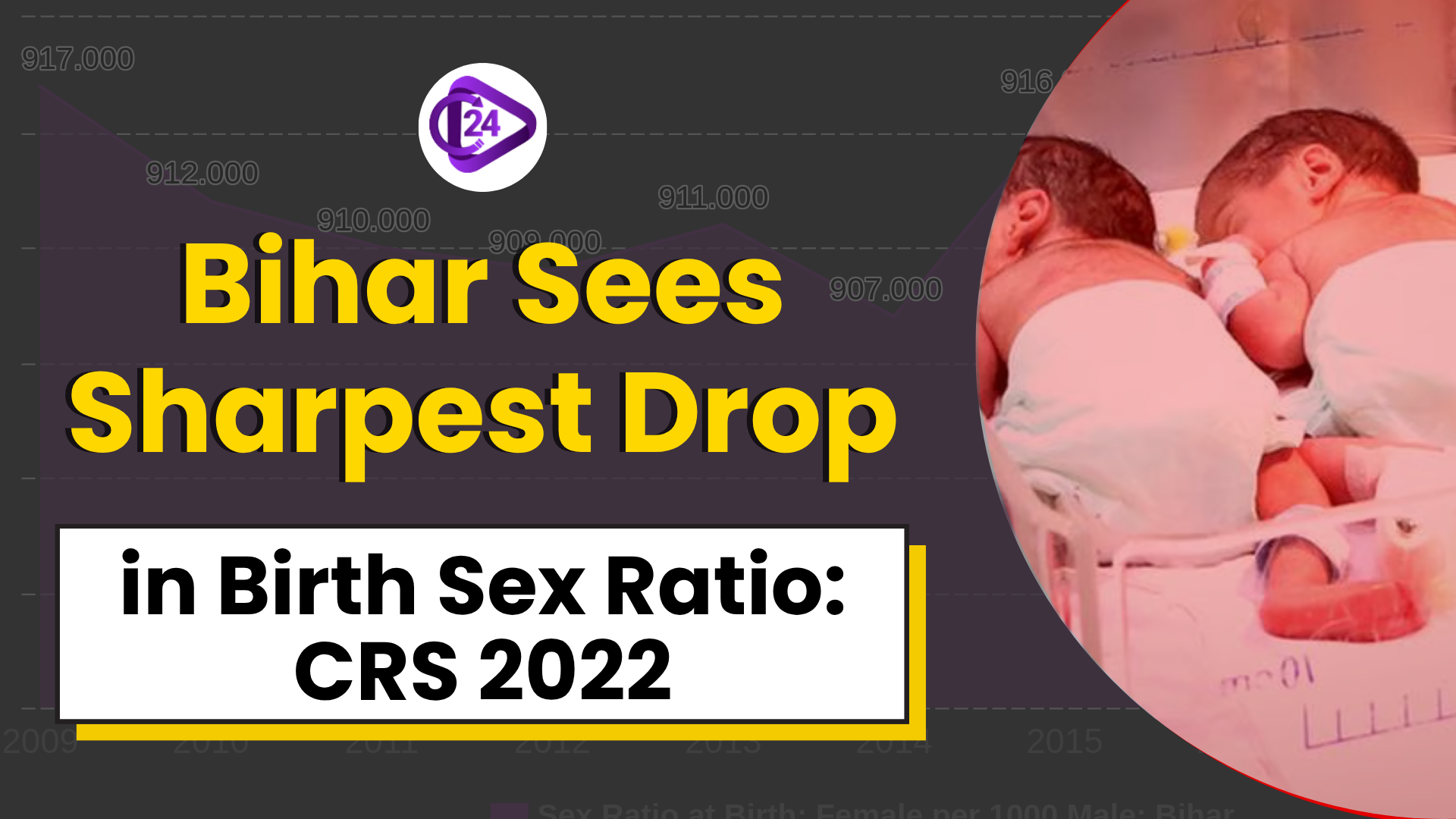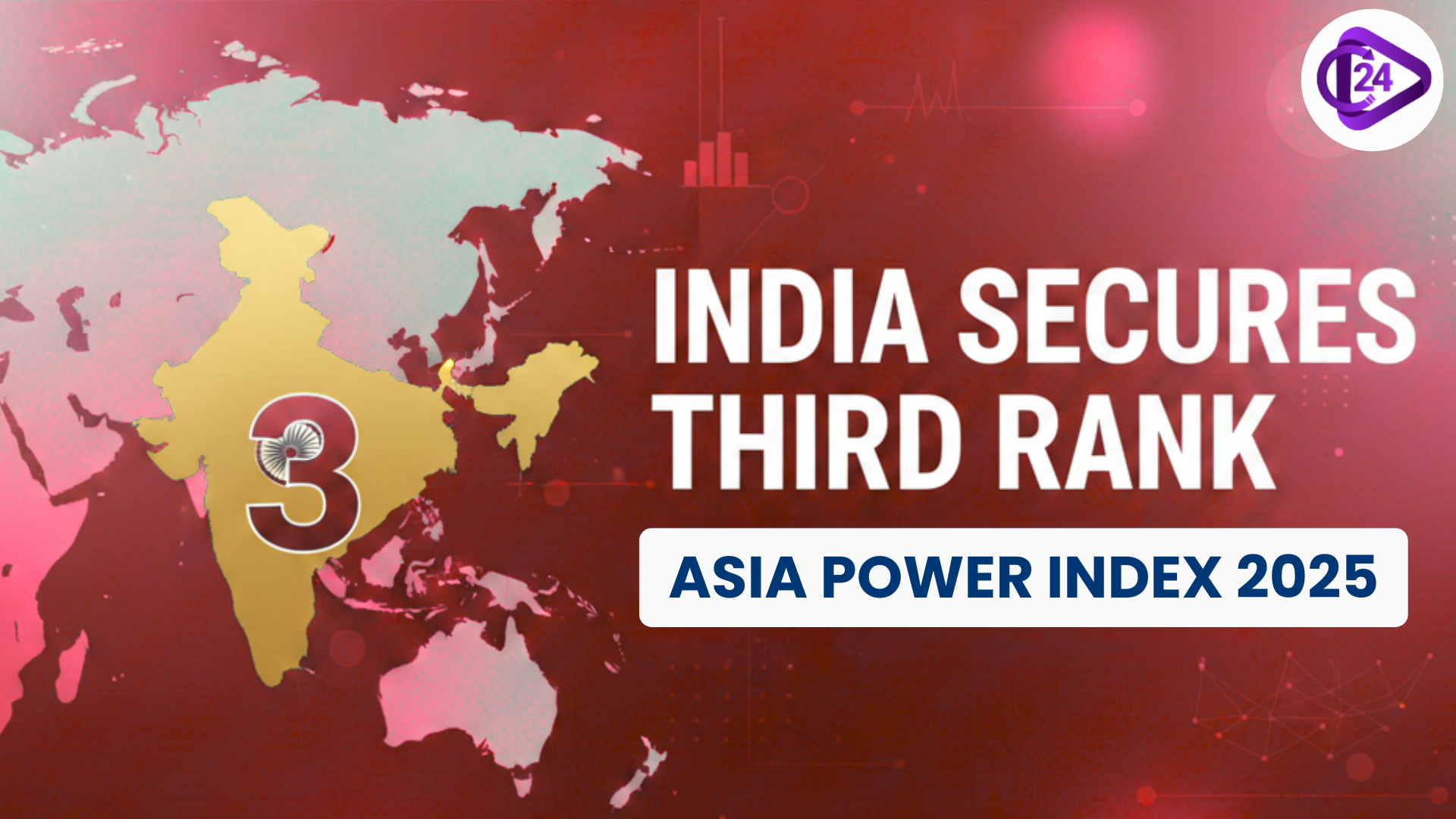
In the latest report by India’s Registrar-General, Bihar is reported to have the lowest SRB in the country at 891 girls for every 1,000 boys. 2023’s figure is far less than 964 reported in 2020 and 908 reported in 2021. The report is released before the Bihar Assembly elections due to happen this year, and it concerns gender equality. Low SRBs were reported in Maharashtra, Gujarat, and Telangana, but northeastern India did very well. Besides birth and death data, the CRS report is included in a comprehensive demographic report.
Context
-
In the past two years, Bihar has seen a big drop in its sex ratio at birth, from 964 in 2020 to 891 in 2022, the lowest for India as a whole.
-
The CRS 2022 report also shows national increases in birth registrations and reductions in stillbirths.
Key highlights of CRS 2022 report
-
Reduced sex ratio in Bihar
-
Bihar’s SRB:
-
2020: 964
-
2021: 908
-
2022: 891 cases (the lowest level ever recorded in India).
-
Bihar saw a steady decrease in disability only in the last 3 years.
-
-
-
States with Low & High Sex ratio
-
Low SRB States (2022):
-
Maharashtra: 906
-
Telangana: 907
-
Gujarat: 908
-
-
High SRB States (2022):
-
Nagaland: 1,068
-
Arunachal Pradesh:1,036
-
Ladakh: 1,027
-
Kerala: 971
-
-
-
Patterns in Children’s Birth Registration
-
The number of registered births has gone up across the country.
-
2021: 242 lakh
-
2022: 254.4 lakh
-
-
-
State-wise trends:
-
Rising: UP, Bihar, MP, Telangana, Uttarakhand
-
Declining: Tamil Nadu, Kerala, Punjab, Himachal Pradesh, Delhi
-
-
Birth Share by Gender
-
Male: 52.4%
-
Female: 47.6%
-
-
Rural and urban areas distribution
-
Births:
-
Rural: 43%
-
Urban: 56.5%
-
-
Deaths:
-
Rural: 59.5%
-
Urban: 40.5%
-
-
-
Stillbirths and deaths
-
Stillbirths:
-
2021: 1.24 lakh
-
2022: 1.15 lakh
-
Total deaths in 2022: 86.5 lakh (drop from 102.2 lakh in 2021 — a pandemic year)
-
-
Important Points about Sex Ratio
-
One thousand males were recorded for every 940 females in India’s population in 2011.
-
As for CSR, 914 boys existed for every 100 girls in the state.
-
The number of females in birth data is more than 9 million because of gender-based abortions during that time (2000–2019).
Factors Contributing in lower sex ratio
-
A. Factors related to social environments
-
In patrilocality, women live at their husband’s house after they get married.
-
In some societies, a father’s property and family position is given to his son.
-
People tend to see daughters as a cost due to the system of dowry.
-
As they become older, children are expected to look after their parents.
-
In some societies, sons are given priority to look after last rites.
-
-
B. Improvements in technology
-
In the 1980s, new ultrasound technology made early discovery of the sex of a baby possible.
-
Each year, more than half of all legal abortions in India are performed for sex-selection even though it is not allowed by law and is illegal.
-
-
C. Issues caused by poor management.
-
Enforcing the law and the schemes is not strong.
-
It Is Hard to Track: Illegal diagnostic centers are usually left undetected.
-
-
E. Lack of political will
-
BBBP suffered due to ineffective and poor execution of the program.
-
Gender equality is not given priority by the government in a number of states.
-
Negative Impact on society
-
Less number of women means that fewer women are available to marry.
-
Levels of Gender-based violence and crimes are going up.
-
Because the ratio is unfair, many women and girls are exploited in various ways.
-
Unmarried men can experience more loneliness and high levels of stress.
-
Disturbance in gender equality undermines the progress of all people in the community.
Ways to Strengthen sex ratio in india
-
Beti Bachao Beti Padhao: This new scheme started in 2015 with the goal of changing people’s perception toward girls and their education.
-
Sukanya Samruddhi Yojana offers a tax saving plan for people saving money for their girls.
-
National Girl Child Day: Every year on 24th January, National Girl Child Day helps to achieve gender justice.
-
The Pre-Conception and Pre-Natal Diagnostic Techniques (PCPNDT) Act: This act was passed in 1994 and forbids sex selection, as well as controls diagnostic technology.
-
As per NFHS-5 (2019–21), there was a drop in sex-selective abortions and CSR increased to 929.
Conclusion
Bihar’s declining ratio shows a big issue in society that is difficult to fix, despite the many rules put in place to change attitudes. As birth registration increases, and death rates have gotten back to normal after the pandemic, it is important to keep attention on gender imbalance by improving laws against sex-selective abortion, raising awareness about it, and helping to support women in the country.
UPSC Prelims Practice Question (MCQ)
The report by the CRS for 2022 revealed which state recorded the lowest Sex Ratio at Birth in India?
A. Gujarat
B. Maharashtra
C. Bihar
D. Telangana
UPSC Mains Practice Question
Q. Despite policies like Beti Bachao Beti Padhao and legal safeguards, India continues to struggle with a skewed sex ratio at birth. Discuss the key reasons behind this trend and suggest corrective measures.



 Tessy Thomas Achieves Major Recognition With Dr Paulos Mar Gregorios Award 2025
Tessy Thomas Achieves Major Recognition With Dr Paulos Mar Gregorios Award 2025 Ramban Sulai Honey GI Tag: A Major Win for Traditional Beekeeping
Ramban Sulai Honey GI Tag: A Major Win for Traditional Beekeeping India Secures Third Rank in Asia Power Index 2025
India Secures Third Rank in Asia Power Index 2025 Constitution Day of India 2025: History, Meaning and Timeline Explained
Constitution Day of India 2025: History, Meaning and Timeline Explained India Launches ₹7,280 Crore Initiative to Develop Rare Earth Magnet Manufacturing
India Launches ₹7,280 Crore Initiative to Develop Rare Earth Magnet Manufacturing Assam Government Introduces Bill to Ban Polygamy with Strict Penalties
Assam Government Introduces Bill to Ban Polygamy with Strict Penalties Guru Tegh Bahadur Martyrdom Day 2025 A Tribute to Courage and Spiritual Strength
Guru Tegh Bahadur Martyrdom Day 2025 A Tribute to Courage and Spiritual Strength India Pays Tribute to the Birth Anniversary of Rani Lakshmibai
India Pays Tribute to the Birth Anniversary of Rani Lakshmibai Kinnaur’s Raulane Festival Celebrates Nature’s Mystical Guardians
Kinnaur’s Raulane Festival Celebrates Nature’s Mystical Guardians Goa Becomes India’s Leader in Complete Cyber Fraud Response
Goa Becomes India’s Leader in Complete Cyber Fraud Response






